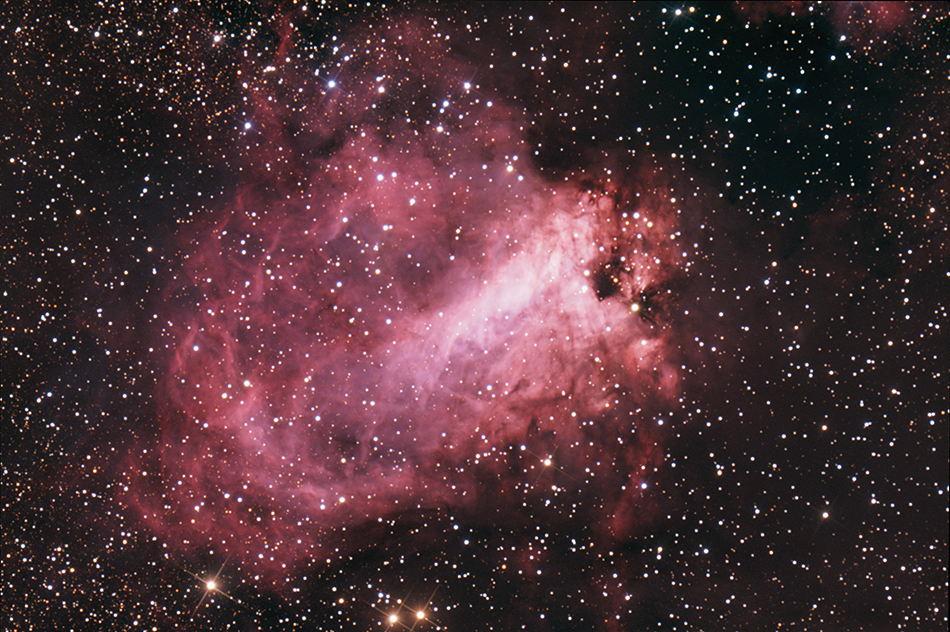

| Object name: | Constellation: | Coordinates: | Apparent size: | Visual brightness: |
|---|---|---|---|---|
| Messier 17 (cluster = NGC 6618) |
Sagittarius | 18h20m / -16°11' | 11' | 6.0 mag |
The H II region Messier 17 ("Omega nebula", "Swan nebula") in the constellation Sagittarius. Messier 17 is between 5,000 and 6,000 light-years from Earth, spans some 15 light-years in diameter, and is considered one of the brightest and most massive star-forming regions in our galaxy. Its local geometry is similar to the Orion Nebula except that it is viewed edge-on rather than face-on. Messier 17 was discovered by Swiss astronomer Jean-Philippe Lois de Chéseaux in 1745 (source: Wikipedia).
Twenty-five 3-minute exposures (75 minutes total exposure) at gain 100, taken on July 11 / 12, 2021, were added for this shot with Astro Pixel Processor (APP) software and the final image processing was done in Photoshop. Darks, flats, and darkflats were used.
Equipment: Cooled ASI 2600MC Pro camera, TeleVue Paracorr Type II coma corrector, 16" f/4.5 "Ninja" dobsonian telescope riding on a dual-axis Tom Osypowski equatorial platform, Lacerta MGEN autoguider, Lacerta off axis system (field of view comparison: image of the moon with the same equipment).
